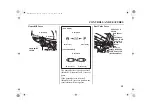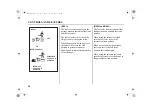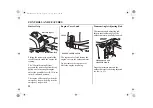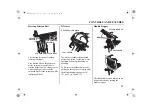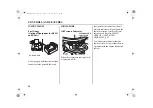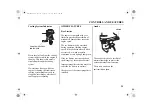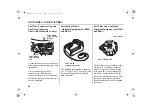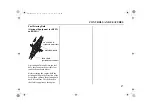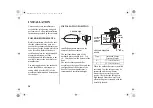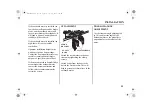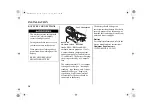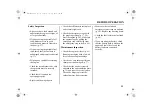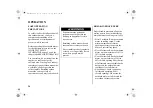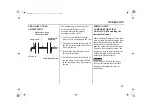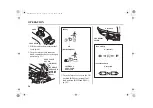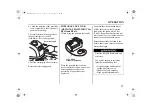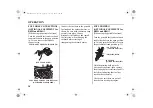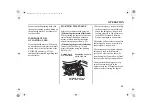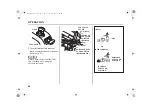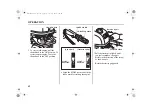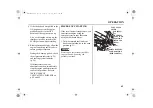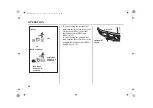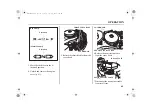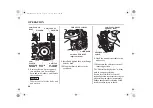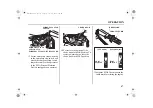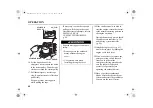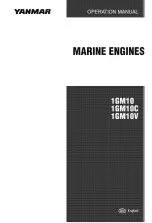
33
BEFORE OPERATION
Safety Inspection
• Before each use, look around and
underneath the engine for signs of
oil or gasoline leaks.
• If you are using the portable fuel
tank, make sure it is in good
condition and properly secured in
• If you are using the portable fuel
tank, check that the fuel hose is
undamaged and properly connected
• Wipe up any spills before starting
the engine.
• Check the stern bracket to be sure
the outboard motor is securely
installed.
• Check that all controls are
operating properly.
• Replace any damaged parts.
• Check that all fasteners are in place
and securely tightened.
• Check the emergency stop switch
for proper operation (p. 17, 39).
Start the engine (p. 39). Make sure
the engine stops by pulling the
emergency stop switch clip from
the emergency stop switch (p. 49).
Maintenance Inspection
• Check the engine oil level (p. 61).
Running the engine with a low oil
level can cause engine damage.
• Check to be sure the propeller and
shear pin are undamaged (p. 77).
• Check that the anode is securely
attached to the antiventilation plate
(p. 75) and is not excessively worn.
The anode helps to protect the
outboard motor from corrosion.
• Make sure the tool kit and
emergency starter rope are onboard
(p. 58). Replace any missing items.
• Check the fuel level in the fuel tank
• If you are using the battery, check
that the battery fluid is between the
upper and lower levels, and the
battery leads are connected
securely.
31ZVC6000.book Page 33 Tuesday, June 28, 2016 1:09 PM

